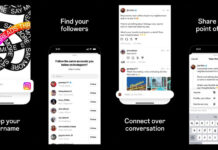Most women around the world think they need to wear a bra. But do they? What are the advantages of wearing a bra?
Although there is nothing wrong with either wearing or not wearing a bra, there are many factors to consider before making a decision.
Breasts contain mainly fat, glands, connective tissue and fluids. These contents are supported against gravity by tissues and the skin that covers them. When you’re sitting or standing, there is much strain on these elements. As you walk or exercise, the tissues inside the breast may experience tiny injuries, causing pain and discomfort. The weight of a large bust may be too much for the chest to support comfortably.
What Is the Purpose of a Bra?
The whole point of wearing a bra is to apportion some or all of the weight of your bust onto the shoulders and waist area. When a bra is properly fitted, about 80% of this weight is carried by the band, and the remainder by the shoulders. When a bra fits poorly, most of the weight is on the shoulders. This might cause headaches, or pain in the shoulders and neck.
Women and girls wear bras for a variety of reasons. Below are some things bras do.
Hide nipples
Delay (but not prevent) sagging
Prevent bouncing of breasts, and thus avoid pain and discomfort
Make some clothes look better
Help show cleavage
Control sweating under the bust
Enhance beauty
Prevent backache and spine issues in busty women
Act as underwear (adding insulation and reducing friction) for the upper part of a woman’s body
What Happens If You Don’t Wear a Bra?
Not wearing a bra is not bad per se. Some women are bra-free at home. But if you don’t wear a bra in public places, the following issues are bound to occur:
You tend to constantly cross your arms over your chest
You sweat under the bust
You become more self-conscious about your bust, which may affect your concentration
You notice other people’s breasts and bras more than usual
You sometimes feel pain in the chest
Your bust slaps on your chest as you walk
You get in the habit of wearing layered, dressy clothes, or opt for those with attached support
You become curious when you see another lady bra-less
At work, other people start seeing you not as professionally dressed
When you go to social gatherings, other guests treat you as unfashionable and backward
Some people see you as sexually provocative
Some fashion outfits won’t fit you and you may have to abandon some of your clothes
You have no easy way to show your cleavage
You have the inclination to wear baggy clothes
If you have a huge bust, your posture changes as you lean back to balance yourself
You experience a sense of freedom
Some things you used to do, like climbing up and down the stairs, become uncomfortable
When Should You Start Wearing a Bra?
Most girls start developing their chests when they are 10 or 11 years of age. Some start as early as eight, while others as late as 15 years old. So, age has little to do with when you need your first bra. Some designers have manufactured bras for girls as young as four years. But do small girls really require a bra? What makes a girl know that she’s ready for her first bra? Below are indications that you, or your little one, may need a bra:
Your chest is no longer flat
The outline of your bust starts to show under your tops
You become self-conscious when others look at your chest
You can feel your bust bouncing as you walk
You change your posture and lean forward to try to hide your growing bust (which might lead to long-term posture issues)
When Should You Start Wearing Supportive Bras?
When small girls start wearing bras, they normally wear the camisole or padded varieties. Since their chests are too small to need support, they wear a bra simply to feel good and grown up. But how do you know that your bust has reached the point of needing to be supported?
You may say it’s when the breasts start sagging. But to what degree to do they have to sag? Is it one millimeter or three inches? One specialist came up with the most widely accepted method, called the “pencil test.” He argued that if the breasts can’t hold a pencil placed under them, they don’t need any support as yet. My own opinion is that if it won’t hurt to wear a bra, and if wearing a bra will delay sagging, then wearing it sooner is better. But, a bra on a flat chest does not make any sense.
Is it Necessary to Wear a Bra During Pregnancy?
Wearing a bra while pregnant is not harmful. It’s not mandatory either, but there are some reasons why a woman might want to wear one.
Your bust might grow more sensitive in pregnancy and feel uncomfortable against outer clothing.
As the pregnancy progresses, your bust may become bigger, heavier and softer in an unpredictable manner.
Breasts may become painful if no bra is worn.
When labor nears, you may start leaking some milk.
Women who don’t wear bras in pregnancy find it hard to wear them after childbirth.
Best Bras to Wear While Pregnant
During the first two or three months of pregnancy, your bra size doesn’t change much. This means you can put on your normal bra. However, a bra on the roomy side is a good idea as you might not notice your bust becoming bigger. Underwire bras can be particularly uncomfortable with the increased tenderness and sensitivity.
The perfect bras during pregnancy are:
Support vest tops
Maternity bras
Sports bras
Nursing bras
Expectant mothers should take a bra measurement at about 10-12 weeks, and then at 2-3 months before delivery. A maternity bra is ideal in pregnancy as it has more adjustments at the back of the band, wider straps, soft cotton lining inside the cups, and it also extends 1-2 cup sizes. If you really want an underwire bra, flexible wire maternity bras are available. They should not be worn to bed, however, as the wires may put unnecessary pressure on your chest, thereby causing pain.
During the last few months of pregnancy, some women may choose to use nursing bras. This is a good move, as the bras will still be useful even after giving birth. They also give confidence to those who are worried about colostrum leakage. During this period, nursing pads can also help. They are used inside the cups and can be re-usable or disposable. Bra extenders are available for those whose cups still fit but whose band size has grown. If you can’t find your bra size in your area, you can always look for outlets that take orders, or buy online.
Under whatever circumstances, wearing a bra will not stop sagging or floppiness. What type of bra you wear, how long you wear it, and when you go without it depend on your own specific needs. Because a bra is not a medical necessity, listening to your body is the key to feeling comfortable. If you don’t feel like wearing one, you don’t need to; but if you feel like you need to wear it, it will probably ease some pain or distress. Whether you wear one or not is solely up to you.
Photo credit: Paul Eddie Yates































